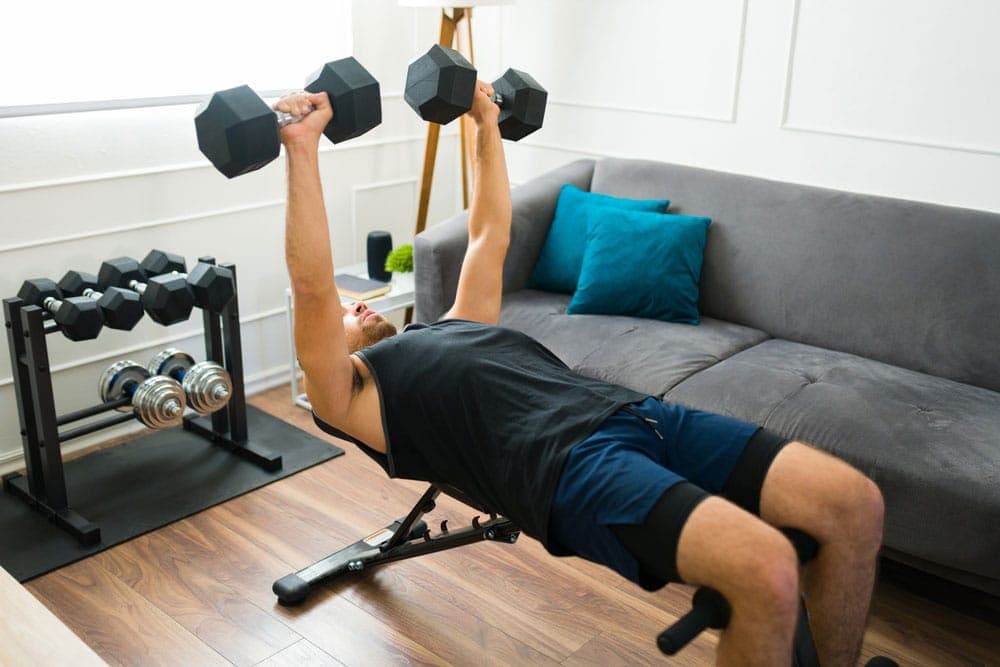Dumbbell vs. Barbell Bench Press: Pros, Cons & Technique
Learn about the differences in the dumbbell vs. barbell bench press. Find out which of these bench press variations suit your training goals.
The bench press is one of the key tests of strength that people use to determine how overall strong you are in the gym. There are a few ways to bench press effectively. You may have your preferences when it comes to a dumbbell vs. barbell bench press.
But can you lift more weight with a barbell than with dumbbells? And which bench press variation uses more of which muscle?
There is evidence that using one over the other in certain cases can be the better option. We’ll look at the “why” and outline the benefits of each weight type for muscular activation.
Starting off, this article will break down the bench press and how to do it, giving an overview of muscles that work too.
Next, we’ll look at a few scientific texts that analyze misconceptions and data around barbell vs. dumbbell bench presses.
Finally, we’ll tell you what types of weightlifters should work with dumbbells vs. barbells for their bench press.
What muscles do you work in a bench press?
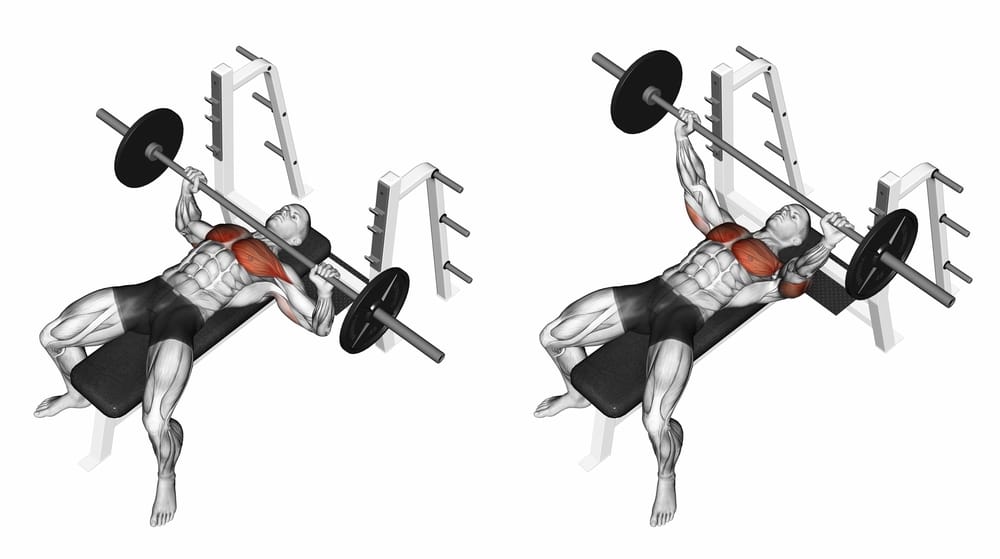
Chest
The bench press primarily works your pectoral muscles (“pecs”), aka your chest. Whether you use a barbell or prefer chest workouts with dumbbells, this is one of the best chest-strengthening moves you can do.
The main pectoral muscles are your pectoralis major and pectoralis minor. The pectoralis major helps you flex and move your arms. The pectoralis minor helps you to draw your shoulder blades forward and stabilize your shoulders and chest. If you love an aesthetic workout, your chest is a body part you should prioritize in training. Strong pectorals give your body not only strength but an aesthetic balance and harmony.
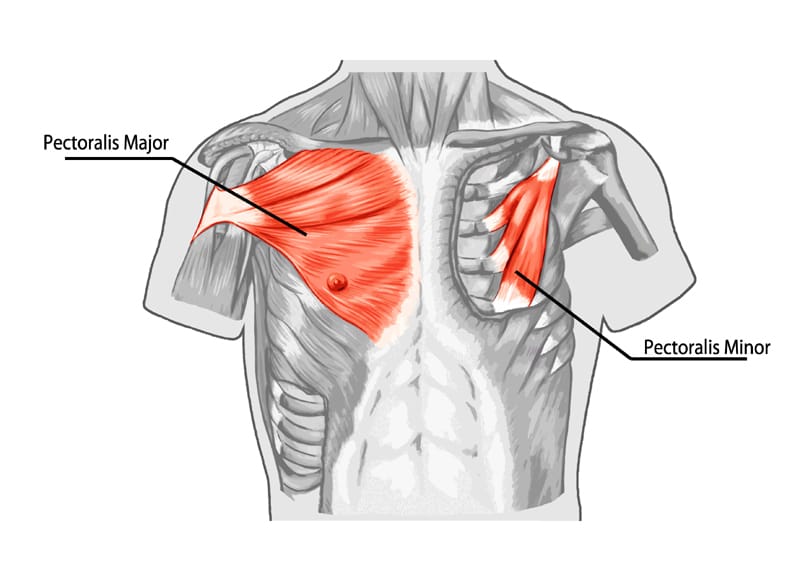
There are two other significant muscles in your chest: serratus anterior and subclavius.
The subclavius helps you keep your clavicles (collarbones) stable while your arms and shoulders move. The serratus helps you to lift your ribcage and breathe, while also helping your shoulder blades to move.
Shoulders
Depending on how you shift the angle, the bench press can recruit a lot of muscular strength from your front deltoids.
These shoulder muscles help you to move your arms forward.
Triceps
The triceps brachii, usually called just triceps are the large muscles on the backs of your arms that act as elbow extensors.
As you bring your barbell or dumbbells up and over your body, the triceps will extend to help with the “press” part of your movement.
How do you bench press?
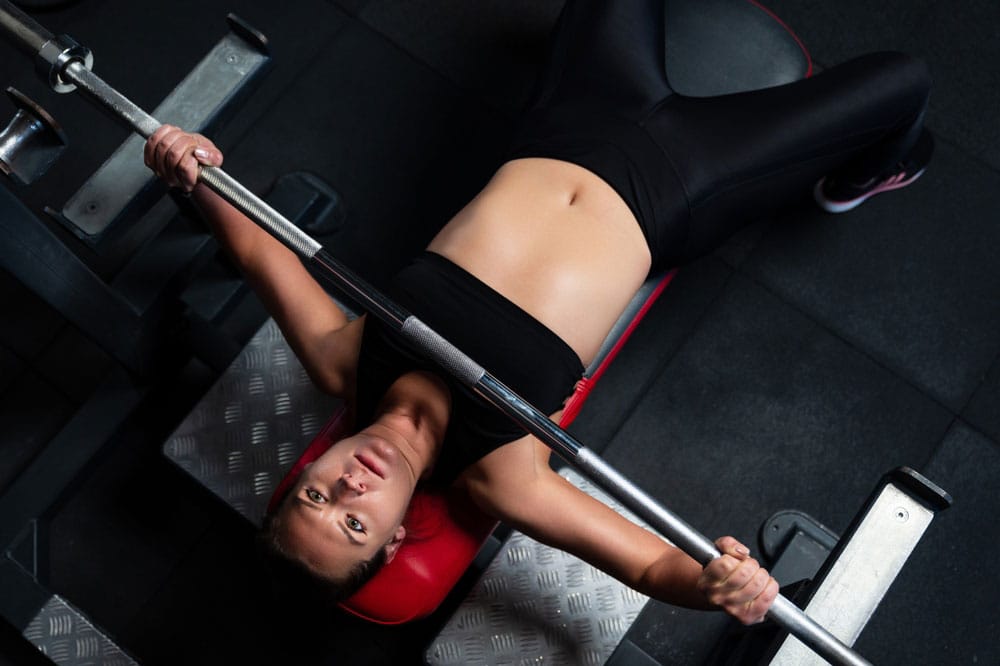
To perform a proper bench press:
- Set-Up: Set up a weight bench in a flat position. Load your weight plates onto your barbell or grab your dumbbells. Plant your feet firmly on the floor. Keep your feet wide and slightly turned out. This move will help you push through your legs and generate more power and strength.
- Body Position: Arch your back slightly. Using an overhand grip, place your barbell firmly in your palms. You want to make sure your barbell doesn’t slip towards your fingers. This will draw your hands back, forcing you to cock your wrists backward so you lose power and stability.
- Press: Push your back onto the bench and unrack your barbell, bracing your core.
Inhale and slowly bend your elbows to lower your barbell towards your chest. Think about “bending the bar.” This will help you keep your elbows tucked in to save your shoulders from injury. Bring the bar to your chest. Here, your elbows should be bent at about 90 degrees. Do not let the weight rest or drop onto your chest, just hover it slightly above. Aim for the middle of your chest.
- Reverse: Exhale to forcefully push your barbell back over top of you. Remember to drive through your feet and legs and keep your core engaged for power.
- Reps: This completes one rep. Continue as needed. Beginners should try 3 sets of 10 reps. If you are aiming for hypertrophy, try 8-12 reps per set. Those lifting heavy should perform 3 sets of 5-6 reps. If you are trying for a one-rep max (only one rep of the heaviest weight you can cleanly lift), always have a spotter at your side.
Dumbbell vs. Barbell Bench Press Benefits
To compare these moves, let's see where the barbell v. dumbbell bench press ranks on a few key metrics.
Weight Lifted
As a general rule, people can lift more weight in a barbell bench press than in a dumbbell bench.
In fact, in a comparison of muscle activity and 1-RM strength of three chest-press exercises including barbell, dumbbell and Smith machine chest-press exercises, researchers found that the dumbbell load was 17% less heavy than the barbell load (and 14% less than the Smith machine).
Why?
To understand, you’ll need to get familiar with the concepts of bilateral vs. unilateral training. Bilateral means working with both sides of the body at the same time, while unilateral means one side at a time.
The barbell bench press is an example of bilateral training, while a dumbbell bench, although you technically work with both sides of your body simultaneously can be considered unilateral.
Though technically you lift both dumbbells at the same rate and into the same position, most people have some unevenness. Where a barbell forces you to extend your arms at the same speed, dumbbells don’t do the same since they are detached.
Bilateral moves in general allow for more power. Here is some more information on these two training styles: Unilateral vs. Bilateral Resistance Training.
Range of Motion
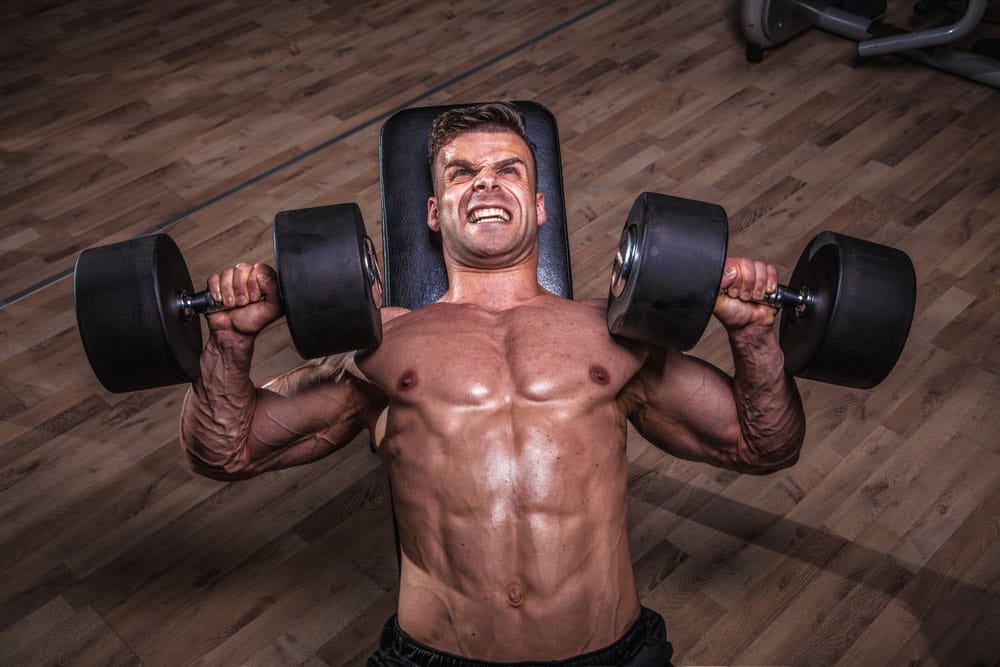
The dumbbell bench press gets the upper hand on this one.
Your arms make more of an arcing motion in the dumbbell bench press, leading to a greater range of motion overall. Barbells only let you move your arms straight up and down. If you’re on the lookout for the best dumbbell chest workout, the dumbbell bench press is a strong contender.
The movement pattern of a dumbbell bench press unlocks more range of motion for most people. If you find you have stiffness in your shoulders or trouble isolating your pecs, using dumbbells can make a significant difference in how mobile your joints feel during this exercise.
Safety

The dumbbell bench press is a safer move for most people.
There are a few reasons for this.
- Easier to bail: If you go too heavy and need to drop your dumbbells out to the sides, it’s generally easy to do. With a heavy barbell, there’s more risk of dropping it on top of your chest and injuring yourself. In that case, it’s best to work with a spotter.
- Ego lifting: An unloaded barbell already weighs 45 lbs and most people are too proud to simply lift the barbell with no weight, even if that’s the best-fit weight for the point you're at in your training.
For novice lifters, sticking to lighter-weight dumbbells is a great way to master your technique before you decide to up your weight and train for strength.
Hypertrophy
To train for hypertrophy (muscle growth) more reps at a slightly lighter weight is a better way to train. Comparatively, you use a higher weight at a lower rep scheme when training for pure strength.
Dumbbells at most gyms are offered at a wide range of weights, starting at as low as 5 lbs. No matter what your starting weight may be, ensuring you have a lighter-weight option can help you train for maximizing muscular hypertrophy and endurance by using dumbbells.
The takeaway
The bench press is a key test of strength.
Both dumbbell and barbell bench presses have numerous benefits for giving you a stronger chest and shoulders.
If you want to lift more overall, go for the barbell bench press. This is an all-out power move. As a total determinant of strength, there’s little better way to prove that you’re jacked than knowing how to bench more than the next guy.
Want to use a barbell to train your legs too? Check out how you can maximize your equipment here:
Maybe you prefer dumbbells. Take a look at how to work your legs with dumbbells:
Track your progress every step of the way, no matter whether you use dumbbells vs. barbells to bench press. The Flex App progresses as you do with plate tracking capabilities and auto progression.
References
Krzysztofik, M., Wilk, M., Wojdała, G., & Gołaś, A. (2019). Maximizing Muscle Hypertrophy: A Systematic Review of Advanced Resistance Training Techniques and Methods. International journal of environmental research and public health, 16(24), 4897. https://doi.org/10.3390/ijerph16244897
Liao, K. F., Nassis, G. P., Bishop, C., Yang, W., Bian, C., & Li, Y. M. (2022). Effects of unilateral vs. bilateral resistance training interventions on measures of strength, jump, linear and change of direction speed: a systematic review and meta-analysis. Biology of sport, 39(3), 485–497. https://doi.org/10.5114/biolsport.2022.107024
Saeterbakken, A. H., van den Tillaar, R., & Fimland, M. S. (2011). A comparison of muscle activity and 1-RM strength of three chest-press exercises with different stability requirements. Journal of sports sciences, 29(5), 533–538. https://doi.org/10.1080/02640414.2010.543916
Related articles


Get fit with Flex
Build muscle & lose weight fast for free.
Available on iPhone + Apple Watch
